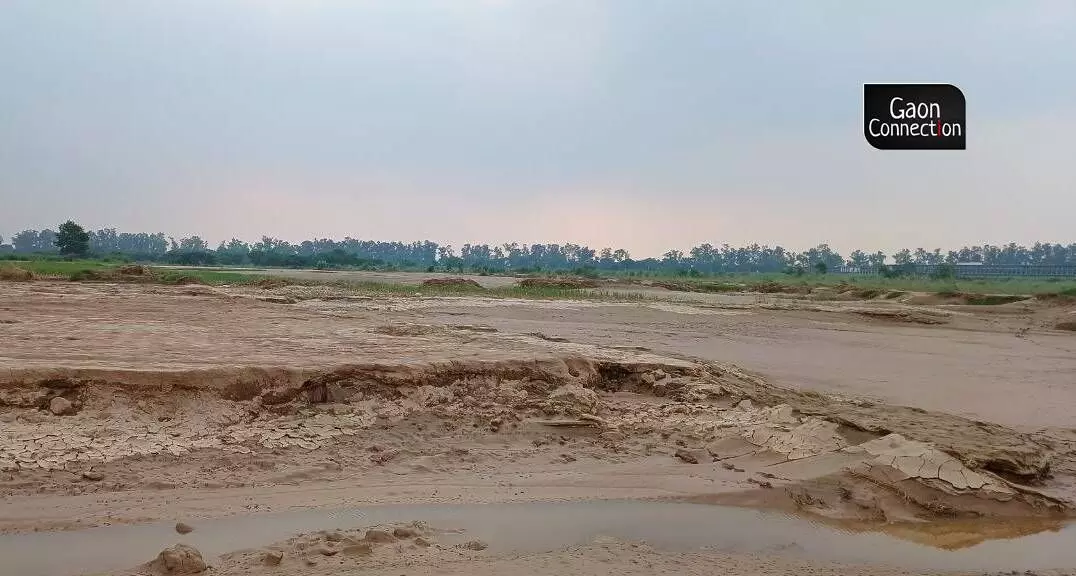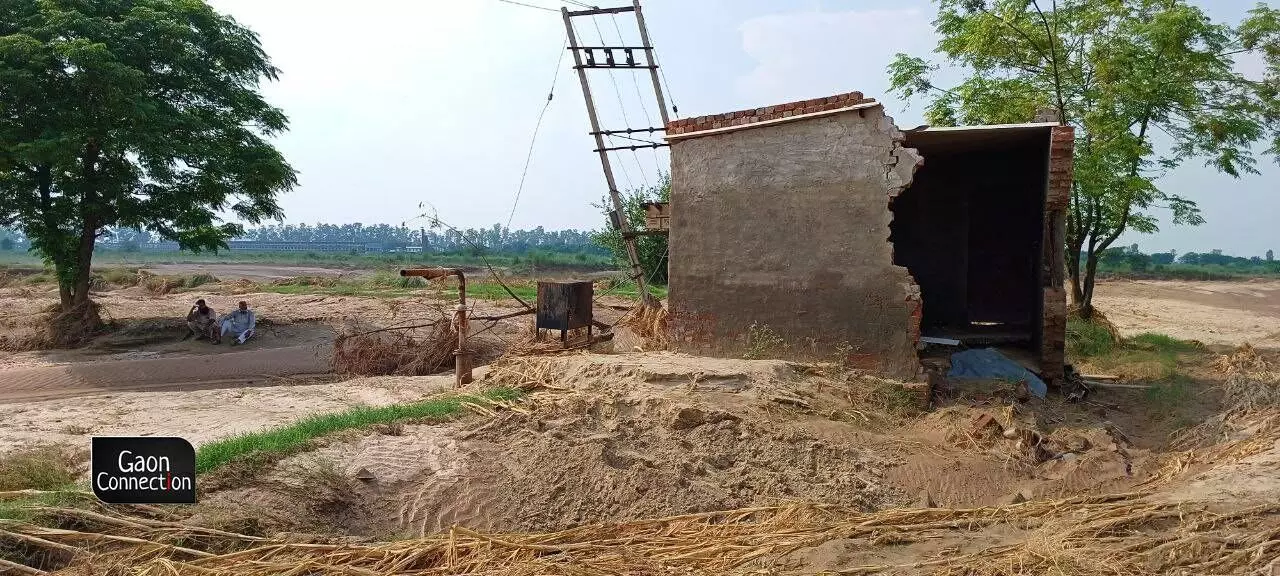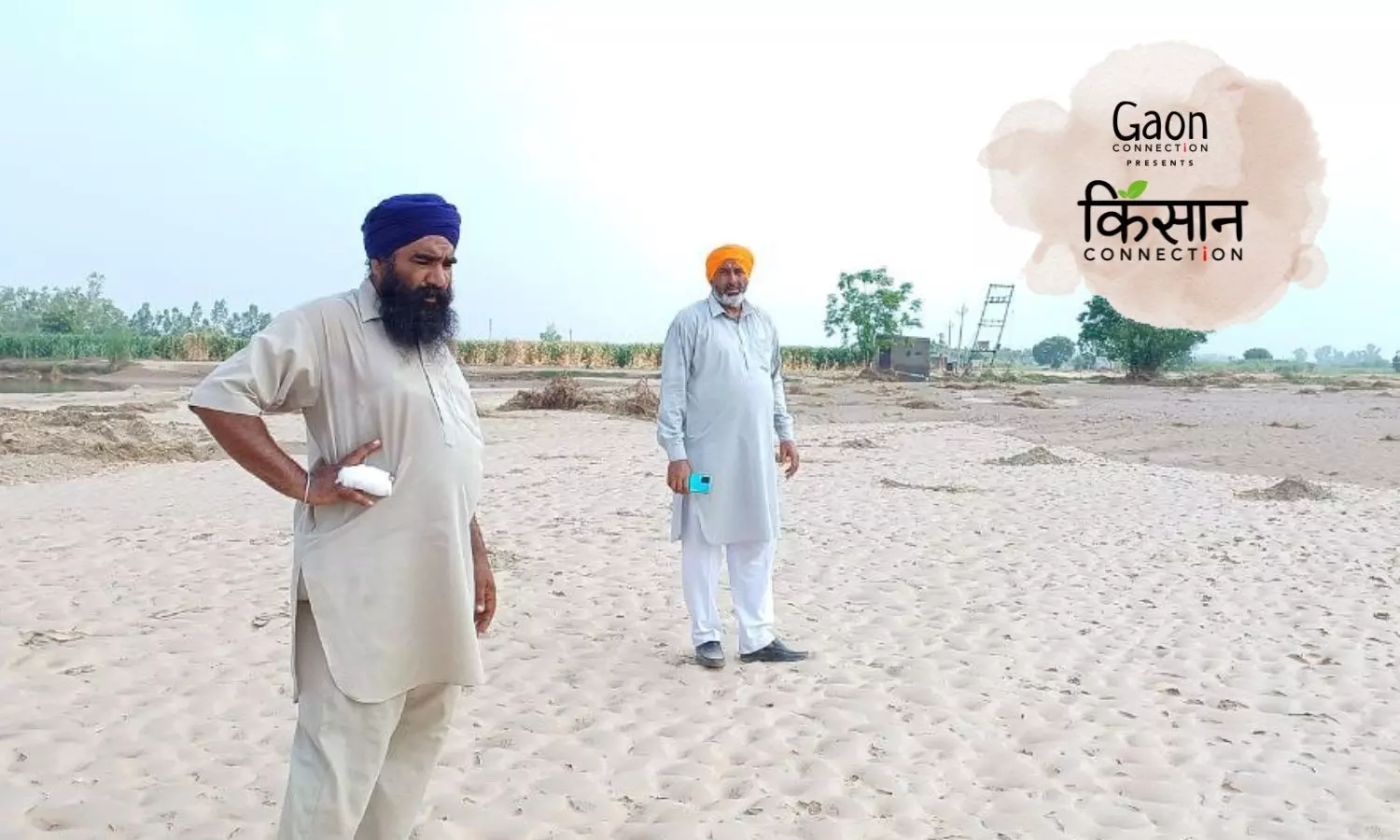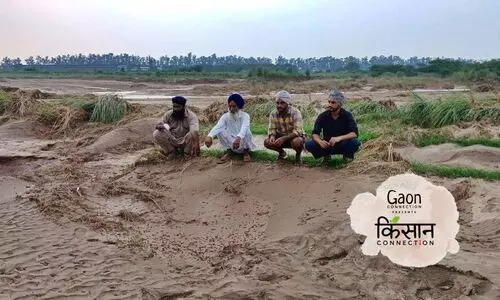Jatwar (Ambala), Haryana
In the aftermath of the roaring sound of the waters of the Tangri river that unleashed havoc on the paddy fields of Haryana’s Jatwar village in the Ambala district on July 20, now an eerie silence pervades its nooks and crannies.
Balkar Singh, a 60-year-old farmer from Jatwar village in Ambala is amongst the hundreds of farmers whose freshly sown paddy was devoured by the incoming waters at a scale that he has never witnessed ever before.
“It is unprecedented. I don’t even visit the fields as it depresses me. In my 60 years of life so far, I have never witnessed such destruction. There was so much water here that it seemed like this is where the river actually flows,” Singh, who had availed five acres of land for sowing paddy for a price of Rs 20,000, told Gaon Connection.
“Although the water has receded, there is a thick layer of sand in the field. The paddy is all washed away and the most fertile layer of the soil is eaten away by the river. It will take four-five years for us to be able to cultivate anything in these lands now,” he added.
Also Read: Ground Report: Livestock and livelihoods swept away in floods in Haryana
The Tangri river which originates in the south-west region of Himachal Pradesh has witnessed a spate due to the above-normal rainfall in the states of Himachal Pradesh, Punjab and Haryana. As per the India Meteorological Department (IMD), as on July 25, Himachal Pradesh has recorded an excess of 73 per cent rainfall while both Punjab and Haryana have witnessed 44 per cent of excess rainfall each.
This excess rainfall caused the Tangri river to be in spate to an extent that it split into two streams near the Jatwar village in Haryana’s Ambala district and engulfed areas which had never witnessed the flow of river water for decades.

The excess rainfall caused the Tangri river to be in spate to an extent that it split into two streams near the Jatwar village in Haryana’s Ambala district and engulfed areas which had never witnessed the flow of river water for decades.
‘Losses too huge, calculations scare me’
Meanwhile, Balkar Singh, the 60-year-old farmer shared with Gaon Connection that the losses he has suffered are unthinkable.
“I am trying to procrastinate the calculation of losses because it just makes me too gloomy. I had taken six acres of land on rent at a price of Rs 45,000 per acre. I will have to wait for another four or five years for these fields to produce a harvest that I can sell to pay off my debt. There are two unemployed sons at my house,” Singh said.
His neighbour Jaspal Singh mentioned not only the fields but also the tube wells and electricity poles in the village are ruined.
Also Read: As they sow, so they weep — Ground Report from flood-hit villages in Haryana
“The sand has entered the tube wells and we will have to get them repaired. I am a retired soldier from the army, I had taken 12 acres of land on rent. I have lost as many as Rs 700,000 due to floods,” the farmer told Gaon Connection.

The paddy is all washed away and the most fertile layer of the soil is eaten away by the river.
‘Never seen a river change course like this’
It is not the extent of flood which shocked the farmer on July 10 as much as the changed course of Tangri river.
“The land here used to be very fertile. Paddy and corn used to flourish here… I just cannot believe that the river would split and flow through these lands. It split here near our village and joined back its usual course after two kilometres. Whatever came in its way just got swept away, at least 200 acres of fertile land has been ruined by the river’s flow,” Gurvinder Singh, a farmer who had planted paddy on six acres of land, told Gaon Connection.
Standing next to Gurvinder, Harmanpreet Singh, was one such farmer who had not only sowed paddy but also sugarcane.

It is not the extent of flood which shocked the farmer on July 10 as much as the changed course of Tangri river.
“A total of six acres of land was under paddy cultivation while another two acres were under sugarcane cultivation. Presently, not a single leaf or sapling is there in my field and there is sand gathered upto five feet in height,” he told Gaon Connection.
Meanwhile Tejveer Singh, the spokesperson of a farmers’ organisation named Bhartiya Kisan Union (Shaheed Bhagat Singh), demanded that the farmers should be compensated by the government to the tune of Rs 50,000 per acre.
Also Read: Interview: “There are several villages submerged under 15 feet of water”
“The government should start compensating farmers. The tube wells are damaged and need to be repaired at the earliest. The damages sustained by the farmers should be compensated,” Singh told Gaon Connection.




















